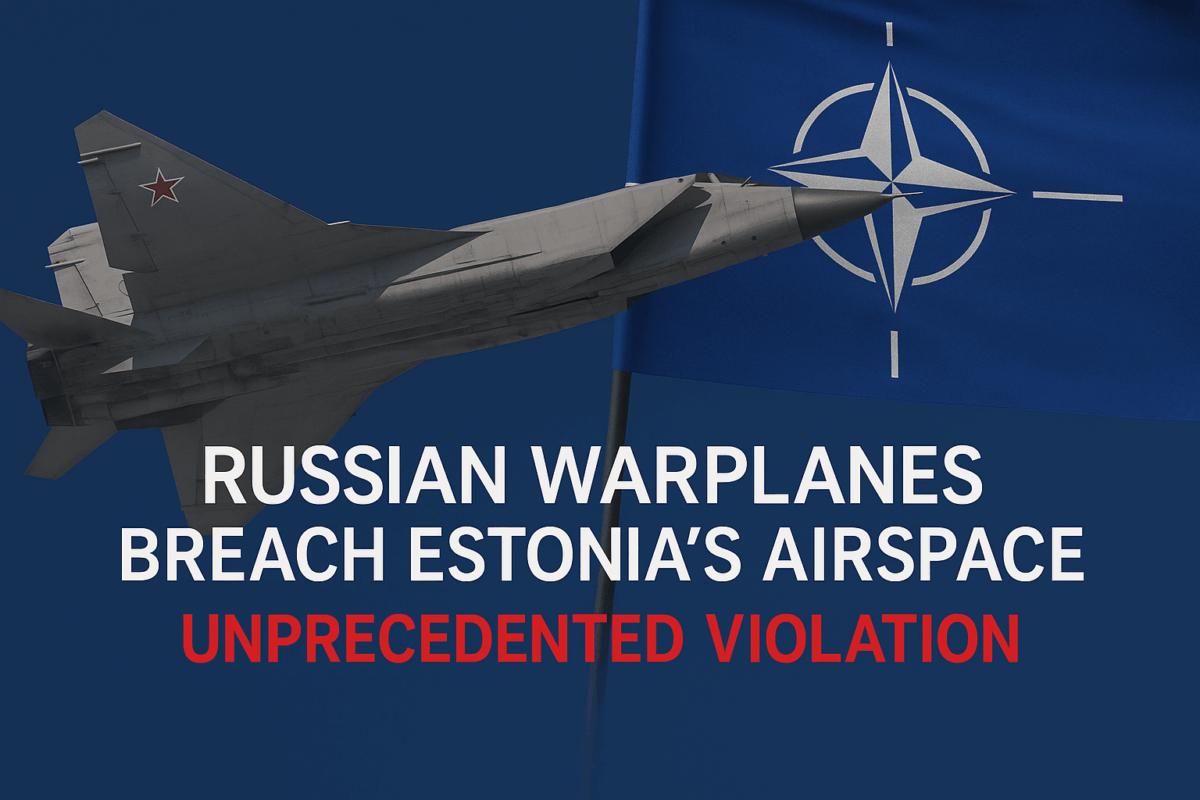The world is watching as tensions between Russia and NATO hit a shocking new level. In a move described by military officials as “unprecedented”, Russian warplanes violated the sovereign airspace of Estonia, a NATO member country. The bold incursion has sent shockwaves across Europe and raised immediate concerns about a potential confrontation between Moscow and the Western alliance.
A Dangerous Breach of NATO Territory
According to reports, multiple Russian fighter jets entered Estonian airspace without authorization. The breach, which occurred near Estonia’s eastern border, was quickly detected by NATO radar systems. Allied jets were scrambled to intercept, creating a tense standoff in the skies.
Estonia’s government condemned the violation as a direct threat to national sovereignty and a clear provocation from Russia. NATO leaders echoed these concerns, warning that Moscow’s reckless actions could trigger serious consequences.
Why Estonia Matters
Estonia, one of the three Baltic states, shares a border with Russia and has long been seen as a frontline state in the NATO-Russia standoff. Its membership in NATO means that an attack on Estonia is legally considered an attack on all NATO countries, under Article 5 of the NATO treaty.
This reality makes the incident far more dangerous. If repeated, such incursions could force NATO to respond militarily — a nightmare scenario that would drag Europe into a full-scale conflict.
Moscow’s Message?
Military analysts suggest that Russia’s actions were not an accident but a deliberate show of force. By sending jets into Estonian airspace, Moscow is testing NATO’s response times and political willpower.
Some experts believe the move is designed to distract from setbacks in Ukraine, while others argue it is a warning shot to deter further NATO support for Kyiv. Either way, the symbolism is clear: Russia wants the world to know it is willing to push the boundaries.
NATO’s Response
NATO Secretary General quickly issued a statement, calling the incursion “unacceptable and highly provocative.” Member states, including the United States and the United Kingdom, pledged solidarity with Estonia and promised to review military readiness in the Baltic region.
The U.S. European Command confirmed that American fighter jets have increased patrols over Eastern Europe, signaling that any further aggression will be met with forceful deterrence.
Estonia Speaks Out
Estonian leaders did not mince words. The Prime Minister stated that “Russia has crossed a red line”, and urged NATO allies to strengthen defenses along the Baltic border. Estonia has also demanded immediate diplomatic explanations from Moscow, though few expect Russia to admit wrongdoing.
Rising Global Tensions
The airspace violation comes at a time when U.S.-Russia relations are already at their lowest point in decades. Sanctions, cyberattacks, and the ongoing war in Ukraine have strained every possible channel of cooperation. Now, with Russian jets flying into NATO territory, the possibility of a direct military clash feels alarmingly real.
International markets reacted with unease, as oil prices climbed and European stock indexes dipped. Investors fear that escalating tensions could destabilize energy supplies and the broader global economy.
What Happens Next?
The world is left asking one critical question: Was this a one-time stunt, or the beginning of a dangerous pattern?
If Russia continues such provocations, NATO may be forced to deploy additional troops and weapons to Eastern Europe. Some even warn that a direct confrontation is no longer unthinkable. The stakes could not be higher.
Conclusion
Russia’s violation of Estonian airspace is more than a regional incident — it’s a test of NATO’s resolve and a signal that Moscow is willing to gamble with global security. For now, diplomacy and deterrence remain the tools of choice. But if the incursions continue, the world could be on the brink of a crisis not seen since the Cold War.


